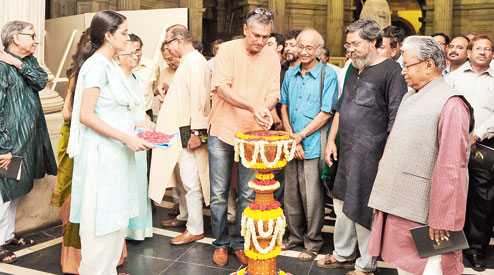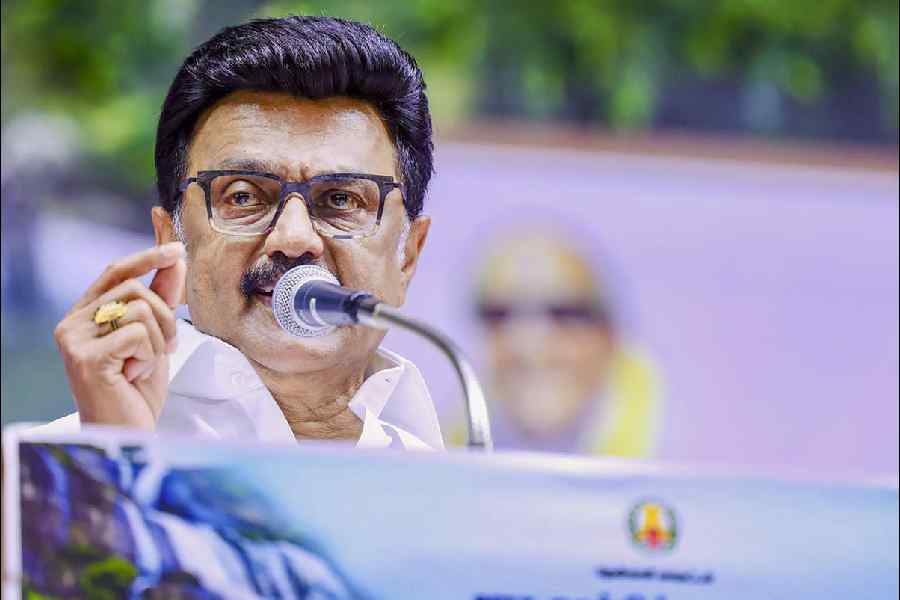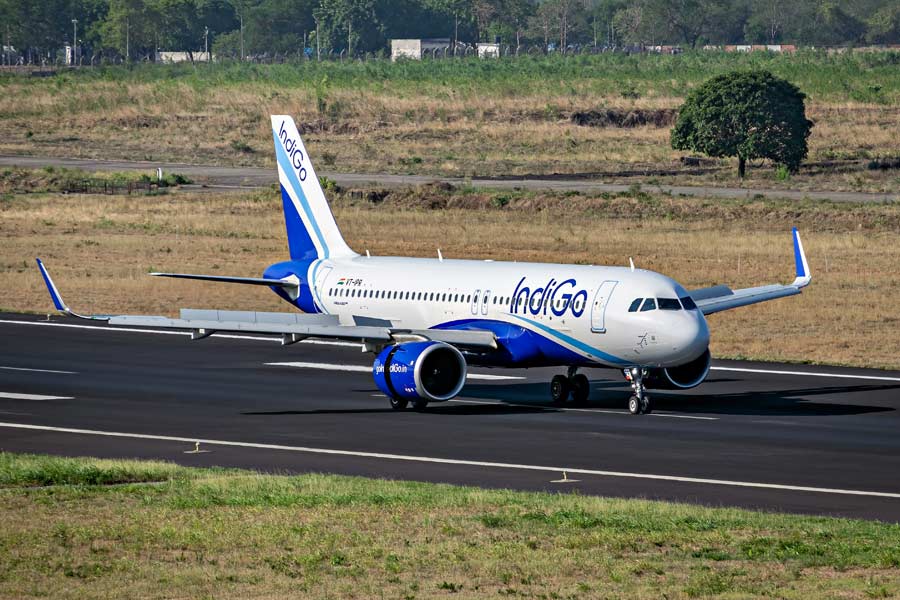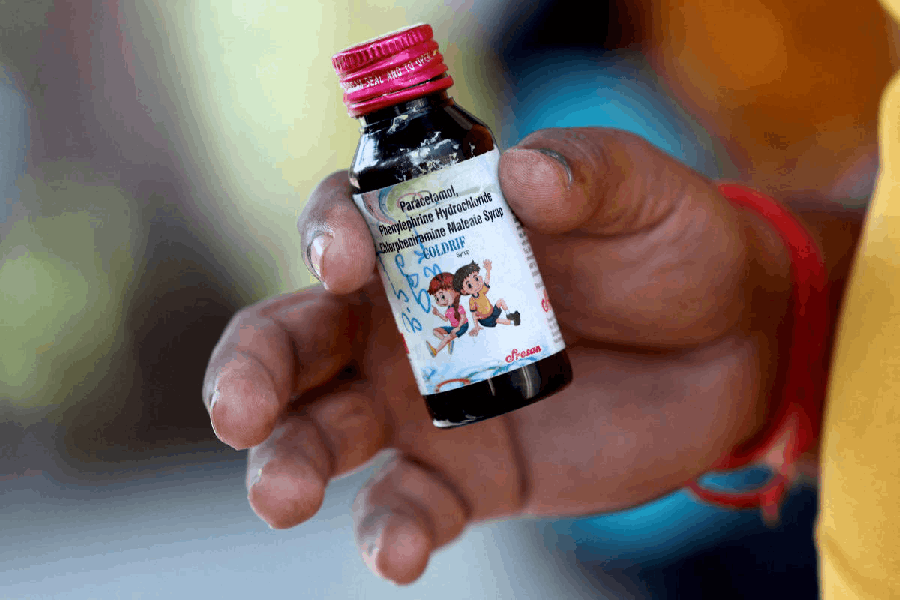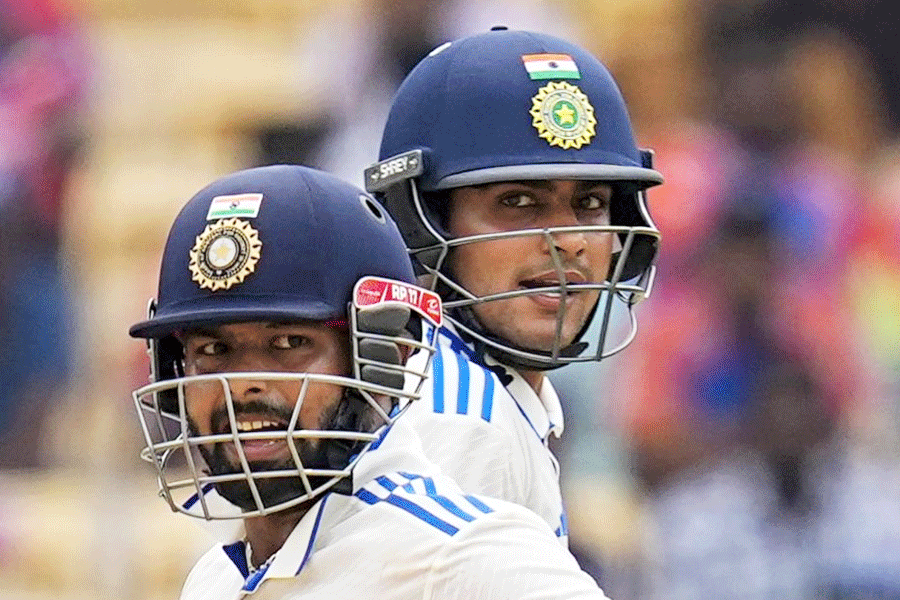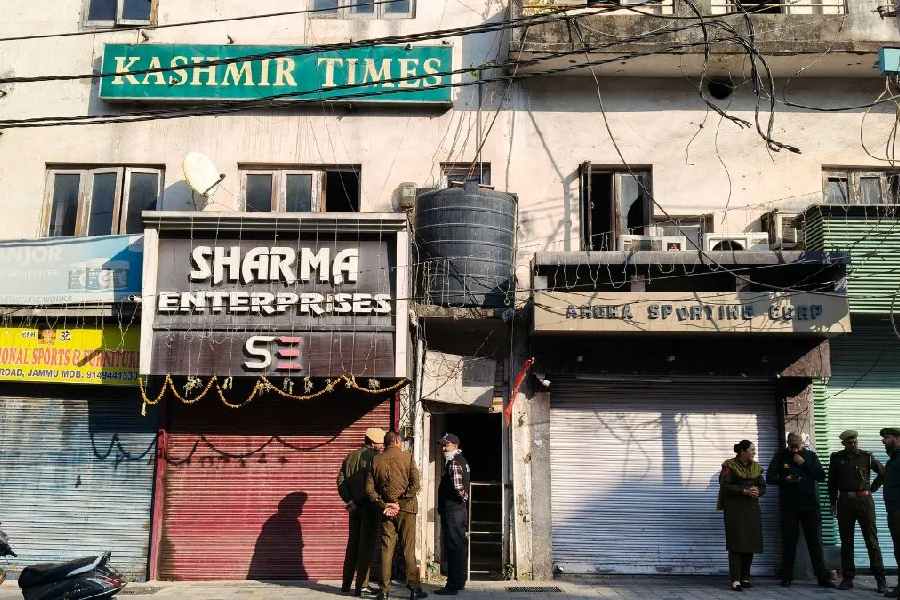 |
| Ganesh Haloi (extreme left), Uma Siddhanta (in sari and glasses), Pradeep Dasgupta (paying floral tribute) and Ganesh Pyne (extreme right) at Victoria Memorial Hall. (Amit Datta) |
Prodosh Dasgupta’s sculpture effortlessly bridged the divide between modernity and tradition, between the innovations of western sculptors of the day like Epstein and Henry Moore and the great legacy we have inherited from our ancestors. His current exhibition on the occasion of his centenary at the Victoria Memorial Hall — the monument itself a unique blend of Indian and Western architectural traditions — comes as a fitting tribute to the artist who integrated two apparently disparate strands of practice in his work.
The exhibition opened last Wednesday evening in the presence of Ganesh Pyne, Ganesh Haloi, sculptors Uma Siddhanta and Bimal Kundu, Swapan Chakravorty, secretary and curator, Victoria Memorial Hall, Siddhartha Ghosh of Lalit Kala Akademi and the photographer Pradeep Dasgupta, to whom belongs part of the collection of his father’s sculpture on display. Chakravorty said Dasgupta’s work had not been exhibited in the city for a long time. Reena Lath of Akar Prakar had proposed that this exhibition move to Calcutta as well when it was earlier held in Delhi along with the works of Dasgupta’s student, Sarbari Roychoudhury.
Art critic Sandip Sarkar in a short speech introduced the sculptor whose name was originally Pradosh Kusum Dasgupta. He was born at Barakar in Dhaka, graduated from Scottish Church college, and was trained at the Government Art School in Lucknow, when he was introduced to Indian classical music. Thereafter, he was trained under Debi Prasad Roychoudhury in Madras, where he met his future wife Kamala. In the 1930s, he was awarded a fellowship by Calcutta University that enabled him to study art at the Royal Academy of Arts in London, and the progressive Academie de la Grande Chaumiere, Paris. This exposed him to the art of the West.
In 1943, Subho Tagore and Rathin Maitra formed Calcutta Group to which both Dasgupta and Nirode Mazumdar were inducted later. He could not stand the small town ambience of MS University, Baroda, and joined the Government College of Art and Craft, Calcutta, as professor of sculpture. In 1957, he joined the National Gallery of Modern Art in Delhi as its director. In 1980, he was artist in residence at Kala Bhavan when he created “instant sculpture” in clay which was “totally three-dimensional that bore the stamp of individualism”, said Sarkar.
Temple art
The centenary celebrations of Calcutta’s only fire temple or agiari in operation at 91 Metcalfe Street, or Bandook Gali, was held on October 4 last year. The temple already has 11 stained glass windows, each created by Katayun Saklat, the stained glass artist who was trained by Patrick Reyntiens, a master of this medium based in the UK. The 12th stained glass window on the first floor verandah of the temple was installed recently in the presence of Saklat.
 |
| A stained glass panel at the fire temple. (Sayantan Ghosh) |
This large piece is of ovaloid shape, and in the middle stands Zarathustra himself in all his glory surrounded by the Amesha Spentas, who are attributes of Ahura Mazda, the Wise Lord, and are “beneficent immortal”. These seven divine beings or archangels were created by Ahura Mazda to help govern creation. Four are male and three female. Ahura Mazda was not depicted because Saklat could not visualise the image for which there are no references. The piece is 8ft wide and 5ft tall and it took her and her team eight months to complete it. This is one of the few fire temples in India that boasts stained glass windows. The first fire temple to be adorned with stained glass is in Bandra, Mumbai. The colours of this Calcutta piece are quite vibrant. The coloured glass glows in the darkness of the corridor and the archangels seem to float in the light. It is best seen during the day, but this is a no-go area for non-Zoroastrians unless they have permission.
Dirty Date
Dates produced in Saudi Arabia, Iraq, Iran and Egypt may be of the most luscious variety and the ones grown in Bengal may not be half as fleshy, but no one can deny that the local stuff is treacly sweet and quite tasty as well. So popular is this berry that it is a must among Muslims for breaking fast during Ramazan. Hindus, too, use it while offering bhog.
Nowadays, the local variety of dates is widely available in the market. It is either sold loose or in packets by roadside fruit sellers. But perhaps a trip to wholesale markets where it is easily available may put off those who love its taste and cloying sweetness.
Koley Market in Sealdah is one of the places where the cheap variety that comes in shades of chrome and brown, and not the rich chocolate of the more expensive type, arrives by the tonne. These are laid out on the narrow street itself leading to the fish stalls. This fruit being sticky, hundreds of these berries cohere to form huge lumps of dates that are impossible to break into smaller portions with one’s bare hands. So using the road surface to absorb the shock, these mounds of dates are broken into smaller pieces with a hammer.
Even if one forgets hygiene and health, the sight of these mounds of dates being broken into pieces is one of the most sick-making. What with the abundance of gutters in that area, things could not have been more yucky. One should think twice before buying dates.
(Contributed by Soumitra Das)

